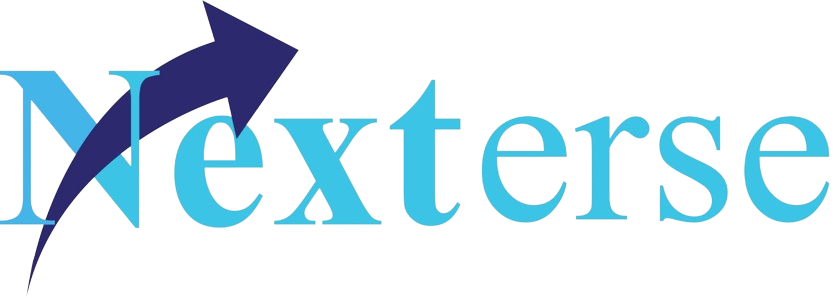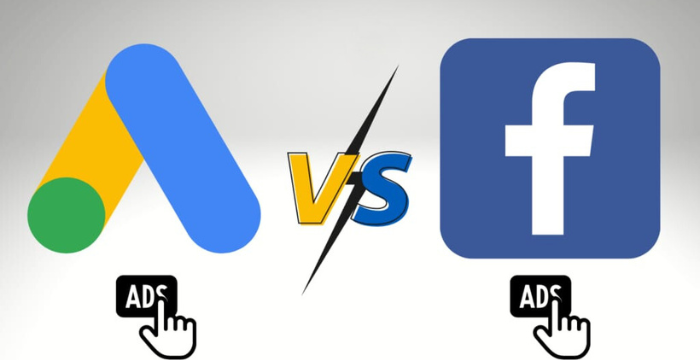Feeling lost in the ad platform jungle? You’ve come to the right place.
In today’s fast-paced digital world, where the market is saturated with competitors, picking the right platform can make or break your business growth. Choosing the right ad platform is crucial for your business growth.
This blog tackles the two behemoths: Google Ads and Facebook Ads. We will uncover the potential of both platforms and share successful business case studies to help you choose the best option for your business growth.
Let’s dive into the depths of these marketing giants!
Understanding Google Ads:
Google Ads is an online digital platform where business owners pay to display their products and services using brief advertisements.
Google ads work on a pay-per-click (PPC) model, which means advertisers will pay only when customers click on their advertisement. This model ensures that advertisers are paying for actual engagement rather than just impressions. Advertisers bid on keywords relevant to their business and the products or services they offer. When users search for those keywords on Google, the ads may appear in the search results.
However, what makes Google ads the best choice to be chosen by business owners? Following are the perils and perks of this which every organisation considers before investing:
A. Strengths of Google Ads
1. High-Intent Targeting
Google Ads allows you to target users based on their search queries. This means you can reach potential customers quickly when they are looking for products or services like yours. This high-intent targeting often results in higher conversion rates.
2. Expansive Reach
With Google Ads, you can tap into the vast network of Google Search, YouTube, and over two million websites in the Google Display Network. This extensive reach ensures that a large and diverse audience can see your ads.
3. Advanced Targeting Options
Google Ads offers sophisticated targeting options, including keywords, demographics, interests, and remarketing. These options enable you to fine-tune your campaigns to reach the most relevant audience.
B. Weaknesses of Google Ads
1. Cost Considerations
Google Ads can be expensive, especially for competitive keywords. The cost-per-click (CPC) can quickly add up, making it a less attractive option for businesses with limited budgets.
2. Technical Complexity
Managing Google Ads requires understanding the platform’s features and analytics. For beginners, the steep learning curve can be daunting, and improper management can lead to ineffective campaigns and wasted budgets.
Understanding Facebook Ads
Facebook Ads run on the world’s largest social network, allowing companies to reach and connect with a wide audience. These advertising, also known as sponsored ads for social media, appear in a variety of formats on Facebook, Instagram, Messenger, and the Audience Network.
A. Strengths of Facebook Ads
1. Targeting Flexibility
Facebook Ads offer highly detailed targeting options based on demographics, interests, behaviours, and connections. This flexibility allows you to create highly personalized ads that resonate with specific audience segments to foster your business growth.
2. Visual Appeal
Facebook Ads are visually rich, making them ideal for showcasing products and services. The platform supports various ad formats, including images, videos, carousels, and stories, which can enhance user engagement.
3. Cost-Effectiveness
Compared to Google Ads, Facebook Ads can be more cost-effective. The platform often provides a lower cost-per-click and cost-per-impression, making it a good option for businesses looking to maximize their budget.
B. Weaknesses of Facebook Ads
1. Lower Intent
Facebook users are typically not actively searching for products or services. This means that while you can reach a broad audience, the intent to purchase may be lower compared to Google Ads.
2. The Demand for Creativity
Successful Facebook Ads require high-quality visuals and creative content. This can be a challenge for businesses without strong content creation resources.
Key Differences Between Google Ads and Facebook Ads
A quick analogy will help you understand the key differences between them, which will help you to choose the best for your business.
Think of Google Ads as a salesperson waiting in a store to answer questions from interested customers, whereas Facebook Ads are meant to introduce yourself and your brand at relevant events and online communities.
How to Choose the Right Ad Platform for Your Business?
1. What Are Your Business Objectives?
If your goal is to drive immediate conversions and sales, Google Ads might be the better option due to its high-intent targeting. For brand awareness and engagement, Facebook Ads could be more effective.
2. Who Is Your Target Audience?
Consider where your audience spends their time online. If they are active on social media, Facebook Ads might reach them more effectively. If they rely on search engines for information and shopping, Google Ads would be the better choice.
3. What Are Your Budget Constraints?
Evaluate your budget. Facebook Ads can be more budget-friendly, making them suitable for small businesses or startups. Google Ads, while potentially more expensive, can offer higher returns for businesses that can afford the investment.
4. Do You Have Content and Creative Resources?
If you have strong visual content and creative resources, Facebook Ads can leverage these assets effectively. Google Ads require less creative content but need a strategic approach to keyword targeting and ad copy.
Maximize Your Digital Impact with Nexterse
After learning the differences between Google Ads and Facebook Ads, you might be wondering where and how to start using these services to increase your business presence in the market. Don’t worry—Nexterse has a specialized team with great expertise in digital marketing and a high success rate.
We look forward to helping and guiding you with expert plans that are cost-effective and efficient for your business to thrive in this digital age.

